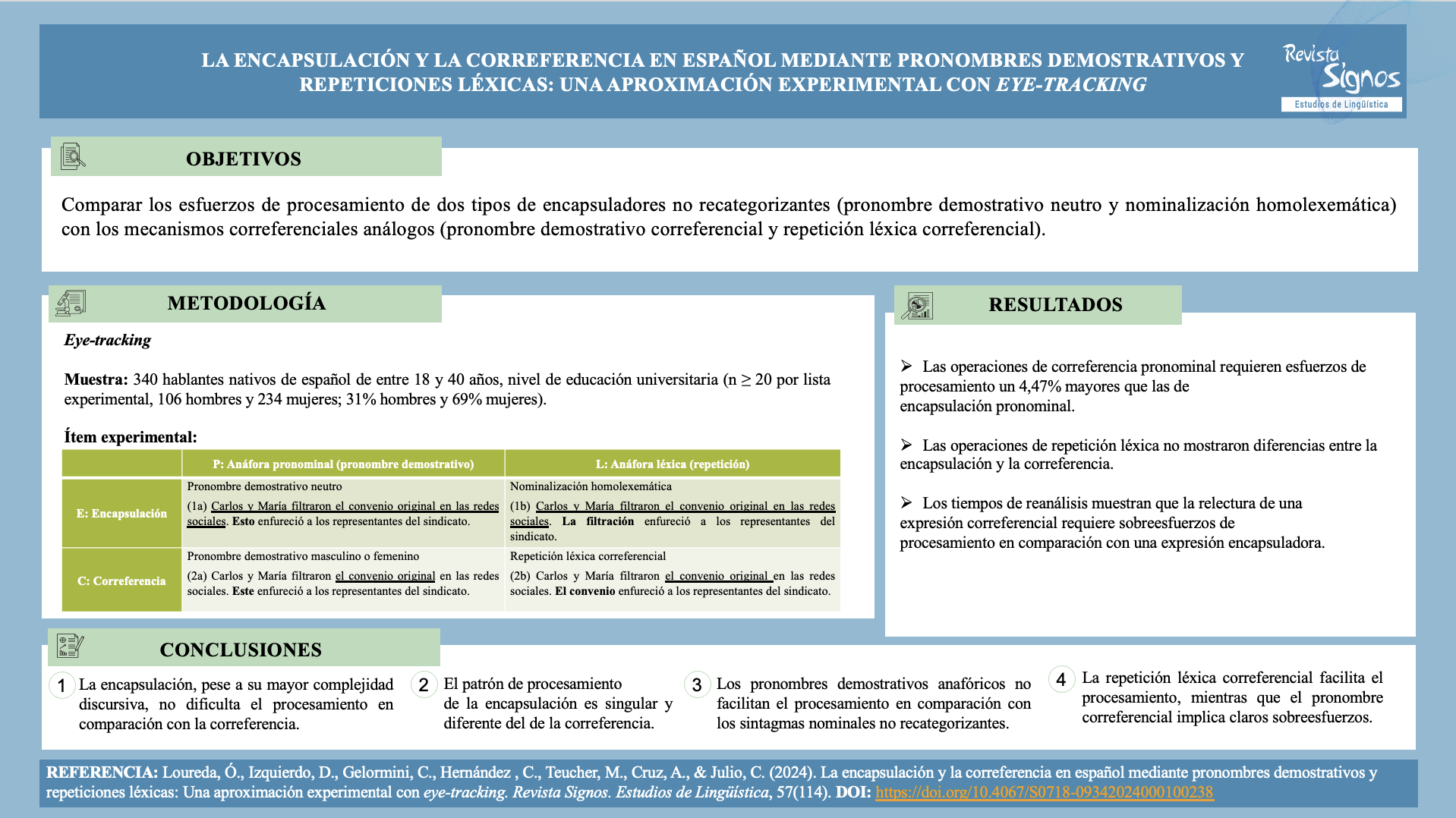Encapsulation and Co-Reference in Spanish Using Demonstrative Pronouns and Lexical Repetitions
An Experimental Approach with Eye-Tracking
Keywords:
encapsulation, co-reference, deverbal nominalization, demonstrative pronoun, experimental pragmatics, eye-tracking, discourse connectednessAbstract
Anaphoric encapsulators are referential expressions which, as they compress textual segments of predicative nature, are expected to present different and more complex processing patterns than those of co-referential expressions, since, for their interpretation, it is necessary to recover an explicature. However, references to encapsulation processing are still scarce and there are hardly any experimental studies that offer data on this subject. In this paper the results of an eye-tracking experiment comparing the processing efforts of two types of non-(re)categorizing encapsulators (neutral demonstrative pronoun and deverbal nominalizations) with analogous co-referential mechanisms (co-referential demonstrative pronoun and lexical repetition) are analyzed. The results concern two variables: encapsulation vs. co-reference and pronominal vs. lexical referential expression (repetition).

Published
How to Cite
Issue
Section
License
Copyright (c) 2024 Revista Signos. Estudios de Lingüística

This work is licensed under a Creative Commons Attribution 4.0 International License.
Copyright agreement:
Authors who have a manuscript accepted for publication in this journal agree to the following terms:
Authors will retain their copyright and grant the journal the right of first publication of their work by means of this copyright agreement document, which is subject to the Creative Commons Acknowledgment License that allows third parties to share the work provided that its author and first publication in this journal are indicated.
Authors may adopt other non-exclusive license agreements for distribution of the published version of the work (e.g., depositing it in an institutional repository or publishing it in a monographic volume) as long as the initial publication in this journal is indicated.
Authors are allowed and encouraged to disseminate their work via the internet (e.g., in institutional publications or on their website) before and during the submission process, which can lead to interesting exchanges and increase citations of the published work (read more here).


